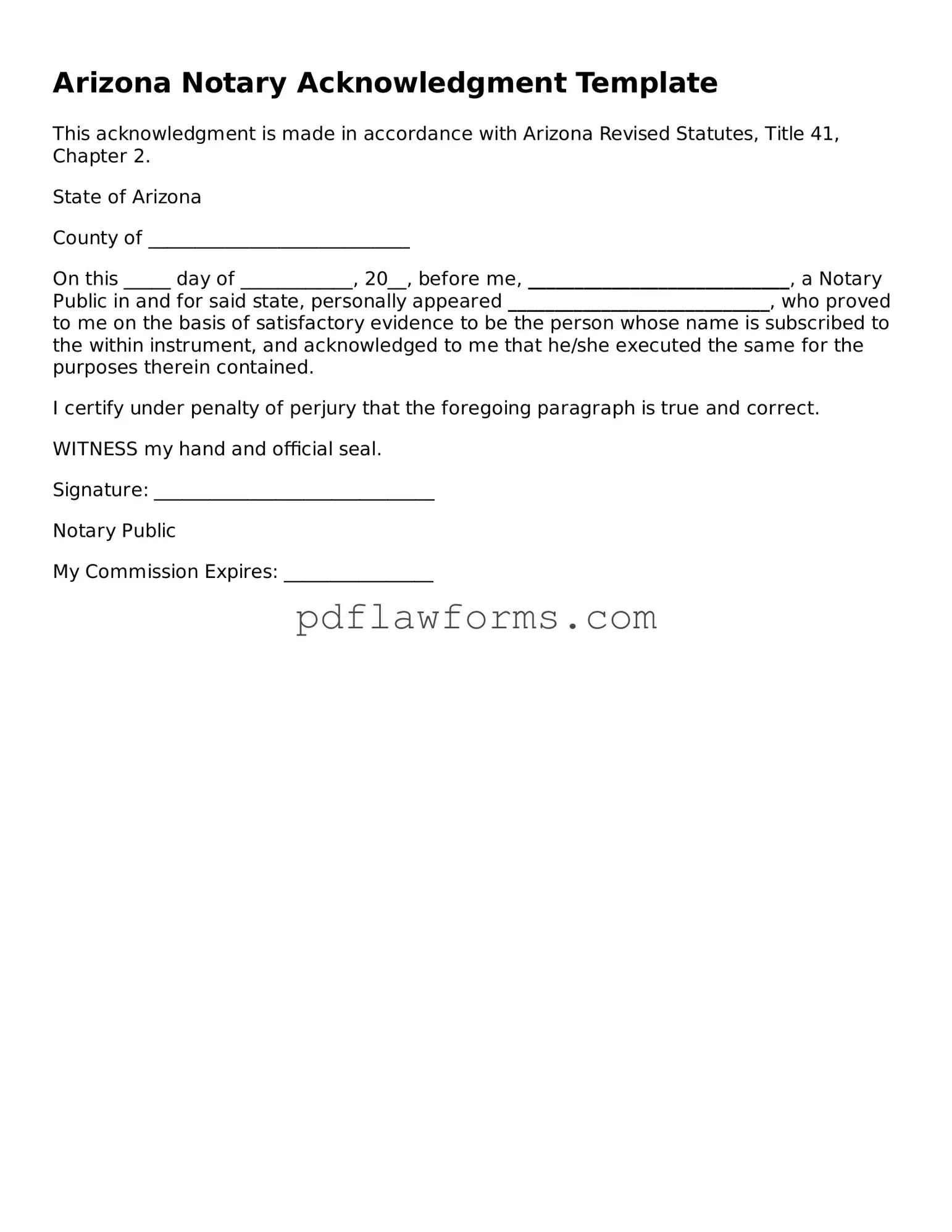Filling out the Arizona Notary Acknowledgement form correctly is crucial for ensuring that documents are legally recognized. However, many individuals make common mistakes that can lead to delays or even rejection of their documents. Here are seven frequent errors to avoid.
One of the most common mistakes is failing to include the date when the acknowledgment is made. The date is essential because it indicates when the notary verified the identity of the signer. Without it, the document may not be considered valid, leading to potential complications down the line.
Another mistake is not providing the correct name of the signer. The name on the acknowledgment must match the name on the identification presented to the notary. If there is a discrepancy, it can raise questions about the authenticity of the signature and the validity of the document.
People often overlook the importance of notarizing in the right jurisdiction. Notaries must operate within the state where they are commissioned. If a notary from another state attempts to acknowledge a document in Arizona, it will not hold up in court. Always ensure that the notary is authorized to act in the state where the acknowledgment is being made.
Additionally, some individuals forget to sign the document in front of the notary. The notary’s role is to witness the signing, so if the signer has already signed the document before the notary arrives, the acknowledgment cannot be completed. Always ensure that the signing occurs in the presence of the notary.
Another frequent error is neglecting to include the notary's seal. The seal serves as a verification of the notary's authority and the legitimacy of the acknowledgment. Without it, the document may be deemed incomplete. Always check that the seal is affixed properly and is legible.
People sometimes also make the mistake of using an outdated version of the form. Laws and regulations can change, and using an old form may lead to issues. Always ensure you are using the most current version of the Arizona Notary Acknowledgement form to avoid complications.
Finally, not double-checking for errors can lead to significant problems. Simple mistakes such as typos or missing information can invalidate the acknowledgment. Before submitting the form, take a moment to review all entries for accuracy. This small step can save time and effort in the long run.
